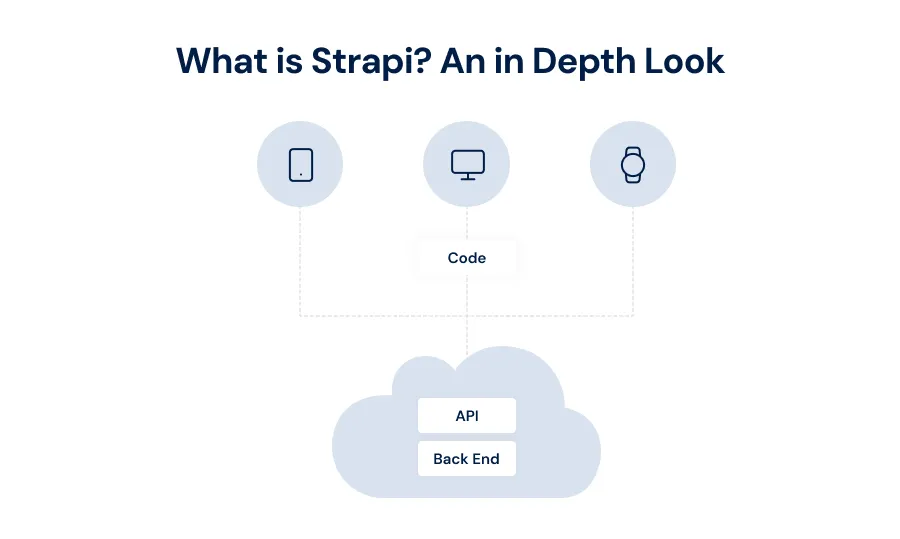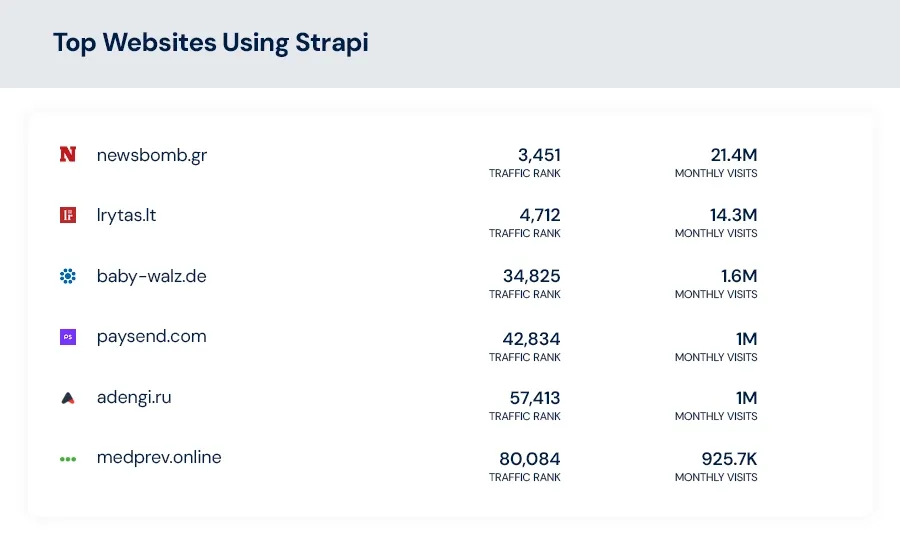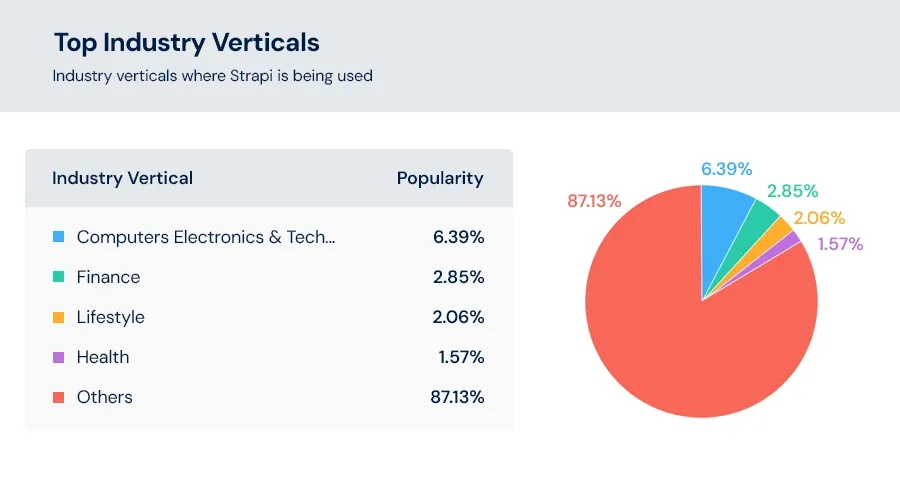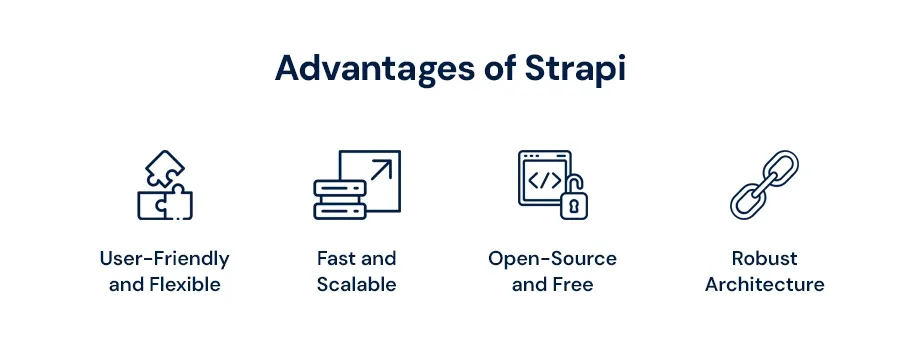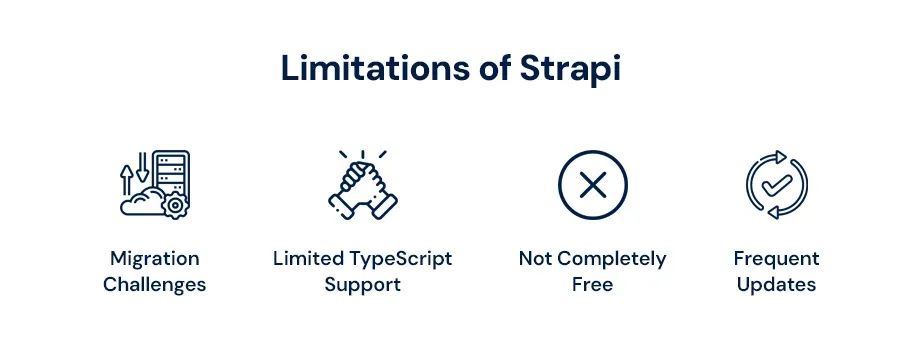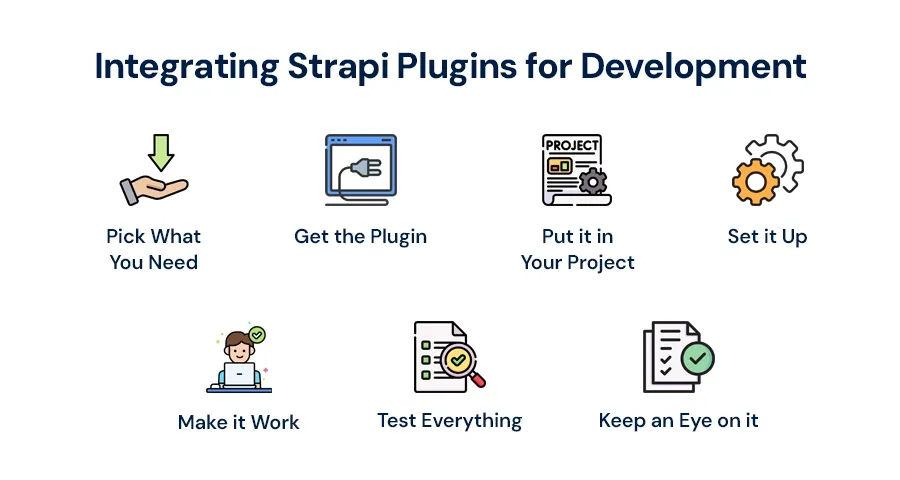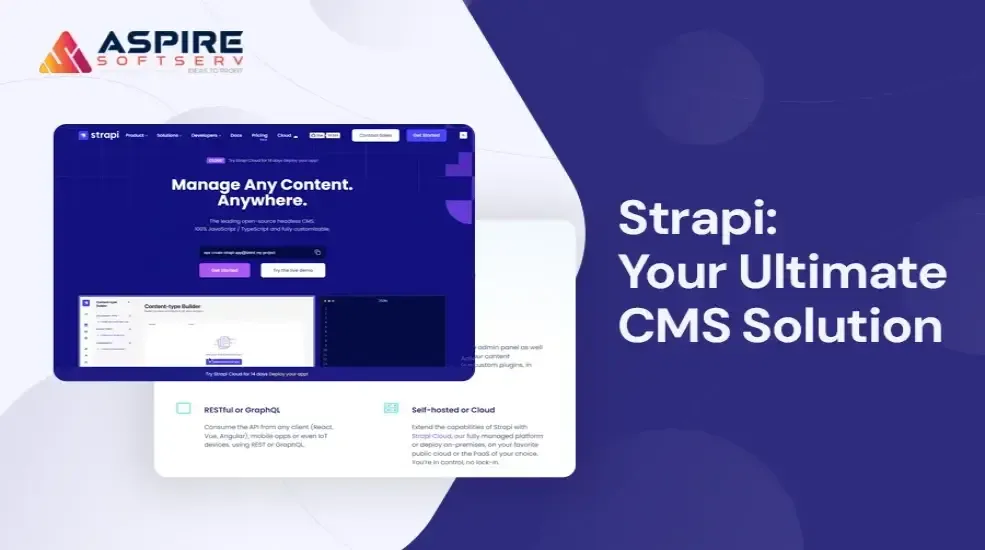
Introduction to Strapi CMS
If you are tech-savvy, then you might have heard about headless CMSs. They are being very popular nowadays. There are many CMSs out in the industry, but Strapi is one of the most popular ones. Strapi is a Node.js-based, open-source CMS. It allows programmers to be flexible with time. It also lets them use their favourite tools and frameworks.
If you are thinking about why strapi is so famous and how to use it in your next project, then don’t worry. We have got you covered. This blog will help you to understand what strapi CMS is, and why it could be a smart choice for your next project. So, why wait? Let’s get started!
What Is Strapi? An In-Depth Look
Strapi is a special tool. It is used in making websites, applications and online stores. It also helps in other digital projects. It’s called a headless CMS. Strapi handles all the content like text and images. You can use it as per your choice of how it is shown on the screen. This makes it more flexible.
Strapi helps in creating API as well. It helps different parts of a website or application in talking to each other. Here, you don’t even need to be an expert in coding or database to do it. Strapi does all the work for you. It automatically sets up the API based on how you put your content.
Strapi is free to use. It has accessible codes which help developers to use it as per their choices. It also supports lots of popular frameworks. React, Vue and Angular are one of those. This makes it easy to integrate with different types of projects. It is also user-friendly which helps developers to start it at their convenience.
The Versatility of Strapi for Diverse Projects
Strapi is a special kind of software. It helps in creating API quickly and easily. It is open-source which means anybody can use it for free.
Content-Type Builder is one of Strapi’s best features. It helps developers to organize their content in an easy-to-manage way. It also has a nice interface which makes it simple to create various parts of a website or application.
Strapi also works with different types of databases. MongoDB and PostgreSQL are some of its examples. Developers can choose the one which is best for their projects.
When combined with a framework called TezJS, Strapi becomes even more powerful. TezJS is a framework used for building websites, and it has built-in support for Strapi as a backend. This means they work together seamlessly to create really impressive websites.
With Strapi and TezJS, you can easily connect the two tools. You can manage your website's dashboard and make sure it runs smoothly. Plus, by using serverless technology, your website can handle lots of visitors. It won't slow down.
Overall, Strapi and TezJS make a great team. They offer high-quality websites with top-notch security and performance.
How to Build Your First API With Strapi: A Step-By-Step Guide
Now as you know about Strapi, let’s see how it is created. To create a Strapi API, follow these steps:
First, open your code editor and create a folder. Name it “Strapi Demo”
Now inside the folder, create two directories. Name one “frontend” and the other one “Backend”.
Now navigate to the “backend” directory. You can do this by typing the following command in the command prompt.
cd backendNow install strapi in the “backend” folder. Use this command:
If you prefer npm:
§ npx create-strapi-app --quickstartOr if you prefer yarn:
§ yarn create strapi-app –quickstartWhen the strapi is successfully installed, you can start building your API in the “backend” directory.
Now, in the “frontend” directory, you can create your frontend application using React, TezJS, Angular, Nuxt, or Vue.
This is how to set up a folder structure for creating a Strapi API. You also have separate directories for frontend and backend as well.
Advantages of Strapi
Now, let’s look at some advantages of using Strapi
1. User-Friendly and Flexible: Strapi has a simple interface. Even beginners can use it easily. With the help of plugins, you can customize it as per your choice without any codes. It is versatile and can handle simple or complex content types without much effort.
2. Fast and Scalable: Strapi is fast and scalable. Strapi is designed for speed and scalability. It can handle high volumes of traffic. It features automatic scaling to optimize performance. Its modular architecture prevents wasteful code development. Developers can focus on building advanced features efficiently.
3. Open-Source and Free: Strapi is completely free to use. It's open-source, meaning anyone can access and contribute to its development. There are no licensing fees or upgrade costs. It's always compatible with the latest Node.js version. Its strong developer community ensures continuous improvement and innovation.
4. Robust Architecture: Strapi offers a solid framework for building APIs. These APIs seamlessly integrate with front-end applications. Its modular design allows for easy installation of plugins via npm. It adheres to Node.js standards. It supports various query types. It includes a user-friendly admin interface for content management, reducing development time.
Limitations of Strapi:
As all coins have two sides, Strapi has too. With advantages, it also comes with some drawbacks as well. Here are some drawbacks of using Strapi:
1. Migration Challenges: If you're already using another backend system like WordPress, moving to Strapi might be time-consuming. Strapi doesn't have built-in support for certain features like WP-CRM. You might need to manually set them up. Converting old endpoints to Strapi can also be tricky, which is why many users prefer to start from scratch with Strapi.
2. Limited TypeScript Support: Strapi doesn't natively support TypeScript. This can be a downside for advanced users working on complex projects. However, you can find plugins in the npm repositories to add TypeScript support, or even create your plugin if needed.
3. Not Completely Free: While Strapi is open-source and free to use, there's also a Pro version available. To get extra features like custom plugin support and professional assistance, hire strapi developer. This means some advanced functionalities may require a paid subscription.
4. Frequent Updates: Strapi is continuously evolving, which means you can expect frequent updates. While this is common for open-source software, it can be inconvenient for developers who prefer stability. Keeping track of these updates is important to ensure your platform doesn't break unexpectedly.
Despite these drawbacks, Strapi remains a popular choice for building APIs and content management systems. This is because of its flexibility and user-friendly interface.
Integrating Strapi Plugins for Development
Integrating Strapi plugins for development can enhance your website or app with additional features and functionalities. Here's a simple guide on how to do it:
1. Pick What You Need: First, think about what extra things you want for your website or app. It could be stuff like letting people sign in, adding cool pictures, or other fun features.
3. Put it in Your Project: After you've found the right plugin, you need to add it to your project. You do this by following some steps using a tool called the Strapi CLI. It's kind of like magic words for your computer.
4. Set it Up: Next, you need to make sure the plugin is set up the way you want it. This means telling it some things like how to connect to your project or any special settings it needs.
5. Make it Work: Once it's set up, you have to make it work with your project. This means changing some of the code to use the new features the plugin gives you.
6. Test Everything: Now, it's time to check if everything works as it should. Try out all the new stuff you added to make sure it works right.
7. Keep an Eye on it: Finally, keep checking on the new things you added. Make sure they're still working well and update them if needed. It's like taking care of a garden to make sure it stays nice and healthy!
Following these steps can help you add cool new features to your website or app using Strapi plugin development.
See Also: Learn Node JS Installation
Conclusion:
Strapi is a great tool for making fast and modern APIs that update right away. You can use it for free, and there are no limits on how you use it. That's pretty rare in today's world!
If you want a CMS just for Node.js, Strapi development is perfect. It also works with LDAP and Swagger, which are useful for some projects. But even if you're not sure, you can try the free version. It's easy to set up, and the instructions are clear.
Build Your Custom CMS Without Limitations

